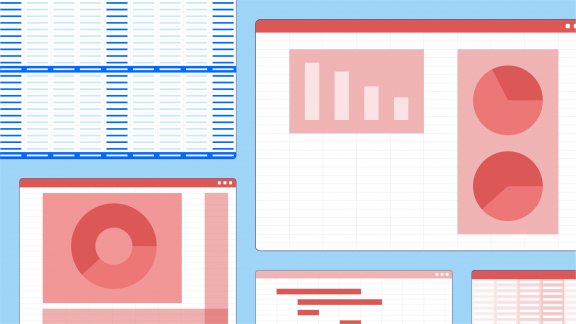Resource management | Change management
Allocating resources - but the right way
Allocating resources properly to projects - that is an art in itself. Who could take on a task? Who has the time? And also the required skills or training? It often takes a lot of time and effort for a company to repeatedly come up with the hopefully right solutions to such day-to-day issues. Simply because the information about the actual state is not there at the push of a button. But that could also be different.
Author : Dr. Daniel Hösli | Last updated: 14. Jun 2023 | 5 minutes read

What does it actually mean to "apply a resource to a task"? To answer this question, we should first look at what exactly a task is.
What is a task?
In project management, we typically do not speak of tasks, but rather of processes, phases or tasks. These terms are to be understood differently depending on the business and industry. Viewed somewhat abstractly, however, they are usually the same thing. Let's stay with the generalized term task. A task is an activity that produces a defined result, also called a delivery object, at the end. For example, a task may require that a concept be developed as to how exactly a measuring device should function. This concept is to be written down in the form of a document, which is then the defined result.
As a rule, we also assign a time and cost budget to the task. This expresses our expectation that the employees working on this task will need approximately or at most this much time and money to achieve the result. For example, we say that the concept should be developed in 500 working hours. Further, we also set a time limit by when the result should be delivered. For example, we say that the concept must be there by October 31 at the latest. If we now add a start date when the work should begin, then we basically have a complete picture of our task:
- What is to be done? Create a concept for the functioning of a measuring device.
- When should this be done? The work can start immediately and should be finished by October 31 (deadline) at the latest.
- How much time may we spend on this? A maximum of 500 working hours.
Such a task is usually part of a project. This consists of a large number of individual tasks, some of which may have strong dependencies on each other; task B is dependent on the results of another task A, which results in general conditions for task B in relation to its start date, etc. In order to have an overview of the entire project complexity, we use Gantt charts almost without exception and draw bars in them that represent our tasks. Higher-level, long-term tasks are referred to as project phases, for example. Subordinate tasks that belong to a phase are then individual work packages or tasks. However, these terms are used differently depending on the organization, textbook, or industry. For the purposes of our discussion, let's stick to the abstract term "task" as defined above.
To execute a task, it needs the right resources....
What is still missing in our task defined above? Of course, the person who will execute the task! Otherwise it remains a well-intentioned planning. "Let's assign the task to someone who has the time to do it," you might say. But we all know that not everyone who is available in the task's time frame will fit the task. Depending on what exactly needs to be done, a specialist is needed, an architect for example. To go back to our example: Here we probably need experienced systems or electronics engineers who can create a concept for a measurement device. People who have done something like this before and have the necessary understanding of the industry and the requirements for such devices.
In other words, to complete the description of our task, we should also define what skills are needed or what requirements are placed on the resources that implement the task. And these requirements can be covered by personnel (an engineer with certain training and experience) or by infrastructure (e.g. a laboratory or a software license).
...and resources have capabilities and availabilities (or not)
Let's return to our initial question: What does it mean to apply a resource to a task? With our thinking, we are now in a better position to answer the question. We know more concretely what we need. If we know the task, including the required skills, then we can look for the right resources for it. Resources that
- are available in the defined time period and
- have the required skills.
And if I now have a tool that solves this search task at the push of a button, then my day as a project manager is saved.
Simplest resource allocation with PQFORCE
This is exactly what PQFORCE can do. Once we have created the work breakdown structure for a project with all its tasks, then with PQFORCE we can quite simply and literally, with a click of the mouse, bring the right resources for a task onto the screen in an instant and visualize their availabilities. It is then up to us as project managers to use this information to make the right decisions and to select and allocate resources. This is just one of the many advantages of PQFORCE. Contact us and let us show you more.
About the author
Dr. Daniel Hösli is Managing Director and Lead Consultant at INTRASOFT AG, whose SaaS solution PQFORCE is the leading platform for agile, project-oriented business management. He has been involved in the development of project management systems on a daily basis for 15 years in a consulting and project management capacity - both organizationally and technically - and thus has the experience from countless contacts and tasks from a wide variety of companies and different management levels.












